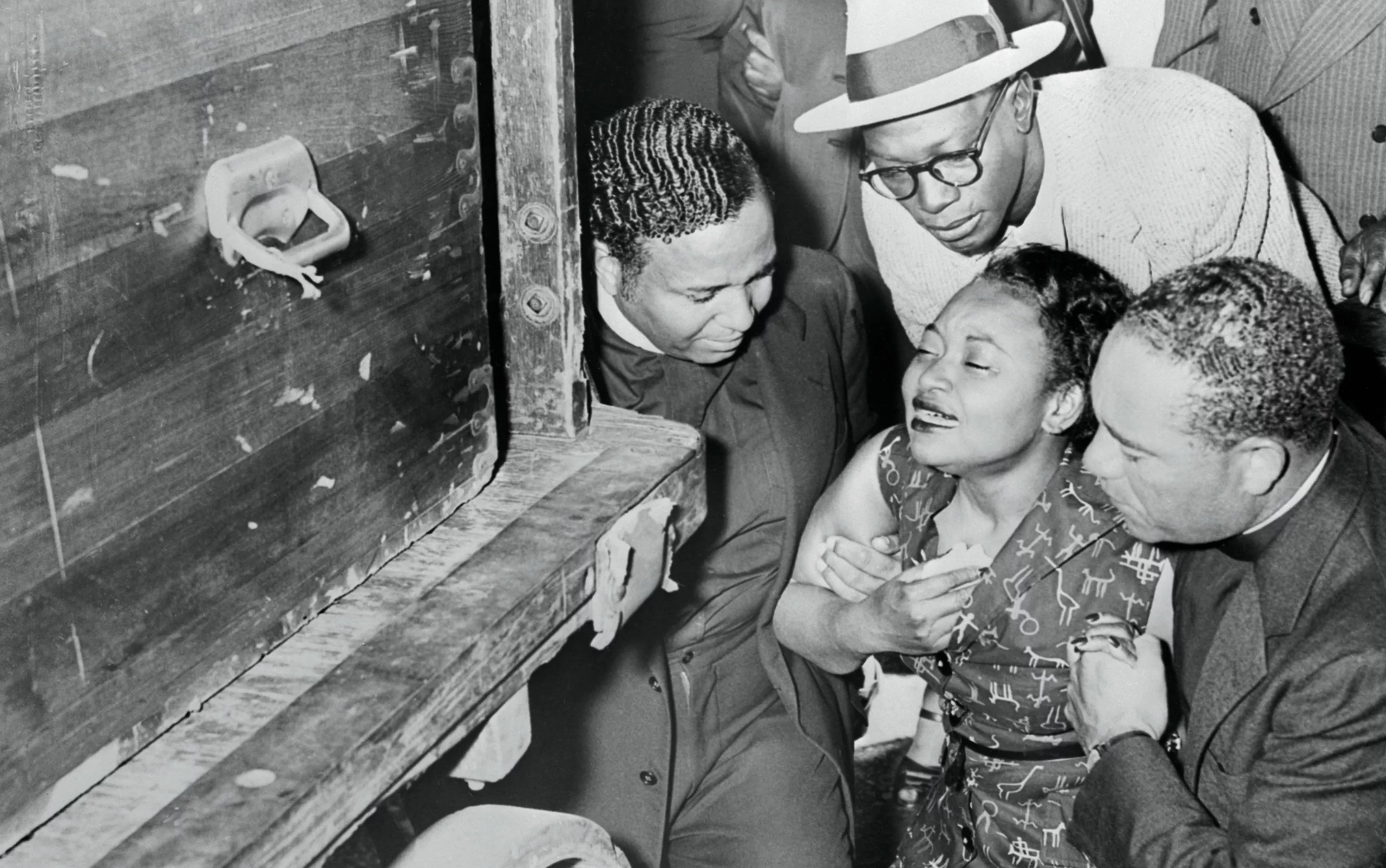Photo by Bettmann Collection/Getty Images
Mamie Till-Mobley was born an only child on November 23, 1921, in Webb, Mississippi. As a young girl, her father moved their family north to Argo, Illinois. She married Louis Till in 1939 (later divorced), and two years later, on July 25, she gave birth to their only son, Emmett Louis Till.
In the summer of 1955 while visiting family in the Mississippi Delta, Emmett was accused of whistling at a white woman. A month and three days after his fourteenth birthday, Emmett was kidnapped and brutally murdered by two white men who proclaimed they were upholding the “purity” of white womanhood. Mobley-Till never imagined this trip would result in her son’s untimely death, yet she turned her grief into action, which ultimately added momentum to the Civil Rights Movement in the United States.
Clarence Strider was the Sheriff of Tallahatchie County, where Emmett’s decomposed body was found floating in the Tallahatchie River on August 31, 1955. His body was badly disfigured, and Sheriff Strider knew he had to conceal this brutality from the public quickly.
In an interview with the Chicago Project in 2003, Mobley-Till discussed how the sheriff attempted to cover up this deadly act by directing Emmett’s family to bury his body by nightfall. When Mamie found out, she demanded her uncle halt the burial and ship her son back to Chicago immediately.
Before Emmett’s body was transported home, the undertaker of the “Hospitality State” sealed the box and Till’s Mississippi relatives were ordered to sign affidavits agreeing that at no point would they open it. It was not until the body arrived in Chicago that Mamie found out the true nature of her son’s murder.
This photograph portrays the ultimate consequence of defying the norms of a racist society—death. When Emmett finally arrived in Chicago on September 2, 1955, three men accompanied the grieving mother to Central Station to meet her son’s remains: the man who would later become her second husband, Gene Mobley (behind), Bishop Louis J. Ford (left), and Bishop Isaiah Roberts (right), both of Roberts Temple in Chicago.
The men can be seen supporting Mamie perhaps emotionally, but certainly physically as it appears that she was beginning to collapse. A crowd gathers behind them. The large wooden box, scraped and scratched, was placed on a flatbed truck. The handle can be seen at the top left of the photograph with the wheels of the truck visible below.
Mamie was overcome with emotion when confronted with the direct, visual evidence that her “Bobo” had not returned home alive. In her memoir, Till-Mobley writes: “What was I about to witness?” How could she know what awaited her inside the sealed box; that the Sheriff of Tallahatchie County attempted to cover up the murder?
Despite opposition, and disregarding the signed affidavits, she demanded the box be opened. When she finally saw her son, he was unrecognizable. Rather than be consumed by grief, she insisted on an open casket funeral and public viewing of Emmett because she wanted the world to bear witness to the brutalities of white supremacy. She famously said: “Let the people see what they did to my boy.”
Although the assailants were never convicted of their crime, Emmett’s death and the collective action of the Black community added momentum to the Civil Rights Movement. After brothers J. W. Milam and Roy Bryant were acquitted, Black residents in Tallahatchie County boycotted their grocery store and drove it out of business. Black people also sent letters to the White House demanding justice for Emmett Till.
Mamie’s determination inspired others who were not already involved in the movement to engage in collective action and demand Black people be treated like citizens. The Montgomery Bus Boycott began just four months after Emmett’s lynching. Rosa Parks said she refused to give up her seat because, “I thought about Emmett Till and I could not go back.”
In her memoir Mamie states: “they were moved to action in ways they hadn’t been before.” Without Mamie’s bravery, would the nation ever have heard the brutal story of Emmett Till?

Listen to an interview with the author:
Learn more:
Mamie Till Mobley, Death of Innocence: The Story of the Hate Crime that Changed America (Los Angeles: One World Print Press, 2004).
Elliott Gorn, Let the People See: The Story of Emmett Till (Oxford: Oxford University Press, 2018).
Keith Beauchamp, “The Untold Story of Emmett Louis Till,” [Film] (2005).





